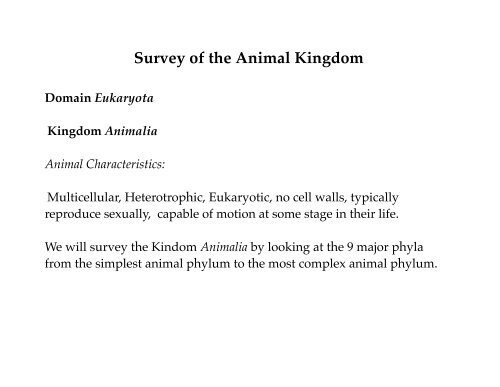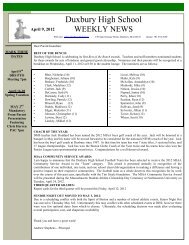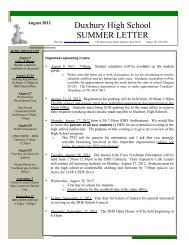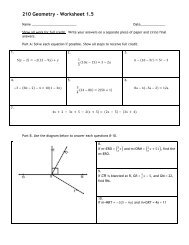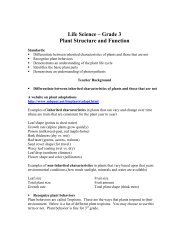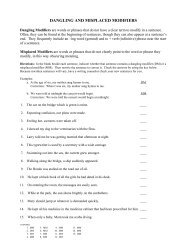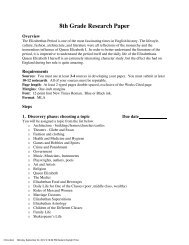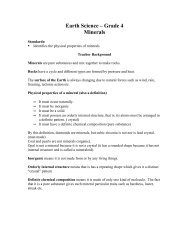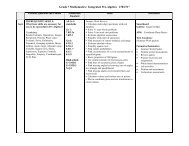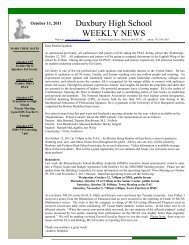Create successful ePaper yourself
Turn your PDF publications into a flip-book with our unique Google optimized e-Paper software.
<strong>Survey</strong> <strong>of</strong> <strong>the</strong> <strong>Animal</strong> <strong>Kingdom</strong><br />
Domain Eukaryota<br />
<strong>Kingdom</strong> <strong>Animal</strong>ia<br />
<strong>Animal</strong> Characteristics:<br />
Multicellular, Heterotrophic, Eukaryotic, no cell walls, typically<br />
reproduce sexually, capable <strong>of</strong> motion at some stage in <strong>the</strong>ir life.<br />
We will survey <strong>the</strong> Kindom <strong>Animal</strong>ia by looking at <strong>the</strong> 9 major phyla<br />
from <strong>the</strong> simplest animal phylum to <strong>the</strong> most complex animal phylum.
Magical Mystery Tour <strong>of</strong> <strong>the</strong> <strong>Animal</strong> <strong>Kingdom</strong><br />
The Beatles-Magical Mystery Tour.mov
I wish <strong>the</strong>re was more <strong>of</strong> "my time"!<br />
Look at how many phyla we could study!!!!!!<br />
http://en.wikipedia.org/wiki/Phylum<br />
These are <strong>the</strong> 9 major phyla we will study:<br />
Phylum Porifera<br />
Phylum Coelenterata/Cnidaria<br />
Phylum Platyhelmin<strong>the</strong>s<br />
Phylum Nematoda<br />
Phylum Annelida<br />
Phylum Mollusca<br />
Phylum Arthropoda<br />
Phylum Echinodermata<br />
Phylum Chordata
SYMMETRY<br />
Symmetry-- Body Plan. How body parts are arranged. The balanced<br />
distribution <strong>of</strong> duplicate body parts or shapes.<br />
3 types <strong>of</strong> symmetry are seen in animals.<br />
1) Asymmetry--No Body Plan<br />
Ex. Sponges
2) Radial Symmetry- Body parts arranged around a center point.<br />
--Any cut through central point results in identical halves.<br />
--No head, front, back.<br />
--Oral surface and an Aboral surface.<br />
Ex. Sea Anemone, Jellyfish, Starfish, Sea Urchin
3) Bilateral Symmetry- Arrangement <strong>of</strong> body parts along a central line or plane.<br />
--Only one way to cut to get mirror image halves.<br />
--Use terms like: anterior, posterior, dorsal, ventral<br />
Ex. Worms, lobster, whale, clams, human, squid
All bilaterally symmetric organisms have a dorsal, ventral, anterior, and<br />
posterior region.


